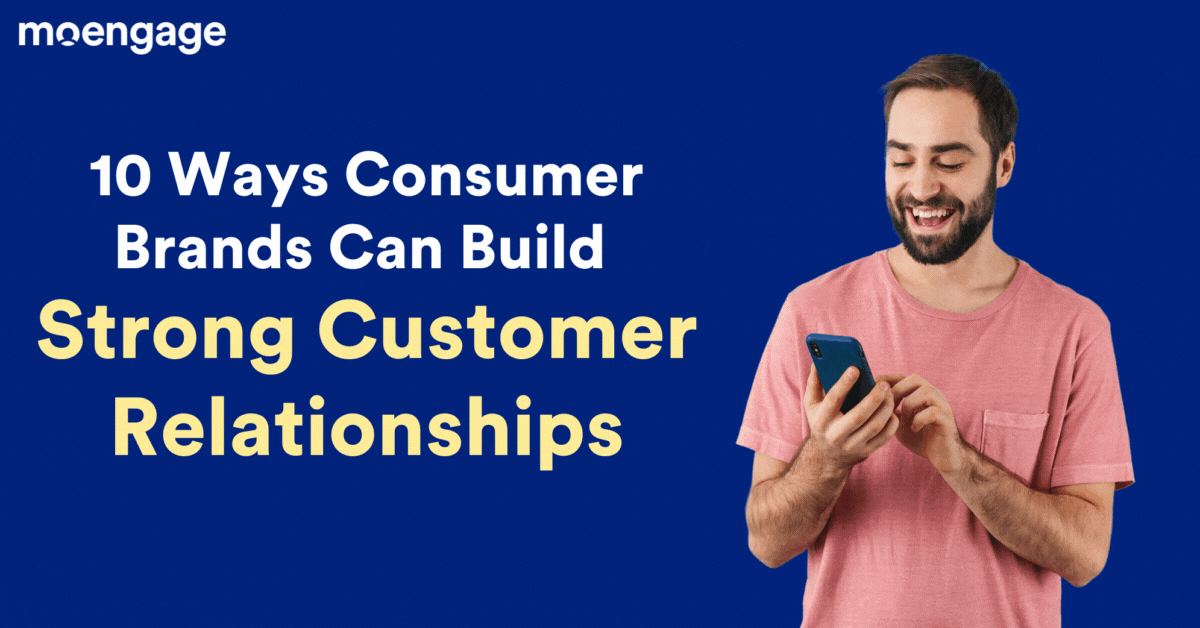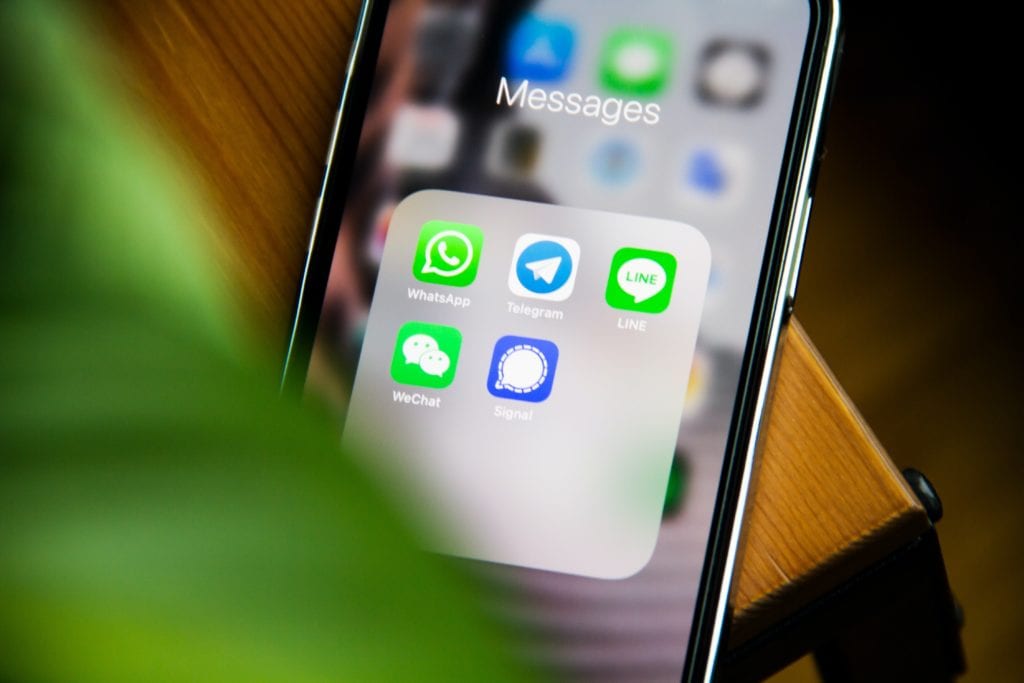10 Tips About Customer Relationship You Need To Know

Reading Time: 7 minutes
Customer satisfaction has a significant effect on business success. Engagement, Retention, and Loyalty suffer as a result of low satisfaction, which is also a sign of poor customer service and costs consumer brands up to $62 billion per year! Customers will have a delightful experience with your brand if you build and maintain good customer relationships with them.
Building customer relationships is important for a variety of reasons, including better customer engagement and higher customer retention rates.
What is Customer Relationship?
The mechanism by which a consumer brand builds a good rapport and loyalty with its customers is known as Customer Relationship. The process of planning and synchronizing interactions with current and future customers is known as customer relationship management (CRM).
The goal is to ensure high customer engagement and business satisfaction. Customer satisfaction during the purchase cycle is a measure of customer relationship success.
All relationships are built on the basis of communication. Nowadays, there are more opportunities than ever to start conversations with your customers, thanks to the internet and social media. Great communication, on the other hand, goes beyond words and creates a real bond.
What strategies can consumer brands use to improve Customer Relationships?
Here are 10 tips for developing strong customer relationships:
1. Address your customers by name and send Personalized communication
Using a customer’s name when talking to them in person, by phone, by email, or when creating customer surveys is one of the best ways to have a more personalized customer experience. Thus, the consumer-business relationship is humanized by a friendlier approach that does not sound coercive.
When a customer buys your product, signs up for a free trial, or sends an inquiry, directly contact them and see if you can assist them. Even if most customers decline your offer of assistance, they will appreciate the gesture and have a more favorable opinion of your business.
Don’t spam your customers, and don’t message them too infrequently either. The best way to establish a partnership with customers is to send them personalized messages based on their interests, delivered via their favorite medium.
2. Realize expectations and hold your horses!
Do not attempt to move too quickly or too soon. Building a partnership is a long-term commitment, and developing confidence takes time. Expect your customers not to immediately believe in your ability to deliver on your promises, or to seek your advice and input for their business.
You can’t say you know what a customer’s needs are because they differ from person to person and change over time. Be sure to find out what’s important to your customers and why they do business with you, so you can make sure you are meeting their needs.
Customers cling to your promises, and making promises that you can’t keep is a surefire way to disappoint them. Furthermore, they can spread the information, jeopardizing your company’s reputation. So, promise what you can deliver.
3. Solicit customer opinion to maintain a healthy Customer Relationship

Proactively solicit feedback from your customers directly or use social media (websites, forums, blogs, and other networking sites). One of the most valuable assets the company can provide is customer feedback. Feedback is a direct indication of how satisfied customers are with your brand, services, and goods in general, so it can tell you a lot about your customer satisfaction levels.
Furthermore, customer reviews will aid in the improvement of your services and products, as well as provide data that helps you make better business decisions. Taking it seriously also shows customers that you appreciate their opinion.
Don’t wait for clients to provide feedback; be proactive and ask for it whenever you have the chance. You may also conduct social media surveys to ask consumers to rate which aspects of their interactions with your brand they enjoy the most and to provide feedback on what changes they would like to see.
Whenever you plan to launch a new feature, product, or service, make sure to conduct surveys to gauge consumer reactions and expectations. It’s a surefire way to increase customer loyalty.
4. Make self-help options available
Some modern customers choose to help themselves rather than dealing with a customer service representative or procedure. Determine the most popular problems and queries, and respond to them in comprehensive articles and step-by-step tutorials.
You can also combine the FAQ/Knowledge Base section with the auto-reply function.
Customers can check it out by including a link in the email body before you respond to them. They can simply find the answer they are looking for.
5. Experiment with discounts, giveaways, and free shipping
Discounts are a perfect way to get customers to buy from you. You can simply have a first-time buyer discount code, as well as the monthly code or any other discount codes on your website page. Also, you can send emails to customers informing them of the different discounts.
Consider doing giveaways. If you have a subscription-based service, this can be extremely effective, for example, consumers could win a free month of service or a subscription to share with their friends and family. Plus, by encouraging people to share giveaway-related posts on social media, you’ll be able to generate a lot of interest.
Free shipping is another thing that customers view as a “discount,” because it lowers the overall price.
Make an effort to provide free return shipping. Many retailers are unsure about this because they believe they would lose money if they have to cover or refund the customer’s shipping costs. But don’t worry, give it a try. It increases trust and loyalty.
6. Focus on common complaints and provide solutions
It’s important to be aware of and respond to complaints quickly if you want to improve service and increase customer loyalty. Try to respond to both positive and negative reviews. In both cases, thank the customer for taking the time to provide you with useful feedback at the end. When dealing with bad feedback, make sure to apologize as well – it will boost customer loyalty more than just compensating them.
Consistent action builds confidence, which is especially important as prospective customers can easily view the experiences of existing customers through digital and social networks.
7. Provide guarantee and trial period
The more risky a customer’s decision to purchase your product is, the more a guarantee will help you reassure them that you care about their experience. Customers are more likely to view the brand positively if they believe they are safe against risks when purchasing something.
And since there is no upfront fee for a free trial, prospective buyers are less concerned about buyer’s remorse and risky investments. When you combine a well-executed free trial with a fair refund policy, you have a powerful tool for encouraging customers to check out your products and services.
8. Provide prompt and convenient Customer Service

Make your communication with customers timely and relevant with sales software to get in touch with and communicate with potential customers. When customers have an issue with your goods or services or have a query about your brand, they expect a prompt and courteous answer. To handle customer queries more effectively, you need to identify the right communication channels. Whether you use customer portal software or another platform, make sure it meets your customers’ needs and allows them to reach out to you easily. Consider this: most people nowadays do not have a lot of free time. As a result, even a half-hour spent engaging with customer service may have a significant negative impact on customer satisfaction.
So, provide omnichannel support:
- In-person communication with the staff;
- Social media support (platforms your customers are using);
- Email support;
- Phone support;
- Live chat support
Make it as simple as possible for your customers to contact you. If you have a live chat service or business phone service make sure to list the hours on your personal website so that users know when they can and can’t reach out to you. Make the customer service process as straightforward and simple as possible, and you’ll have satisfied customers who feel valued.
9. Reward Customer Loyalty
Personalization is a must for today’s customers. It’s what leads to increased revenue and customer retention. In general, running a loyalty program is the best way to provide them with a customized experience because it makes it easier to obtain relevant customer data. Customers are more pleased with programs that have a high level of service.
Faithful customers should be recognized and rewarded for their continued support. Offer them exclusive deals, let them be the first to hear about new products and services, and invite them to special events. As a result, satisfied customers who see a high value in your products and services become strong advocates for your business.
Always keep in mind that your company exists only by and because of your customers. Providing truly exceptional customer service would keep them coming back for more.
10. Say ‘Thank You’ to build better a Customer Relationship
Thank your customers in a variety of forms, including email, social media, phone calls, formal receipts, and handwritten notes. The latter is very important; even in this age of electronic communication, receiving a handwritten “thank you note” is always appreciated!
Thank-you notes show customers how much you care about them and that your company sees them as individuals, not just a source of revenue.
Keep in mind that well-written thank-you notes will lead to positive word-of-mouth publicity for your business. It’s pretty straightforward: consumers receive the notes and happily share a photo for all of their social media followers to see. Also, try sending out holiday cards, too!
Business is all about building and maintaining relationships. Your most valuable resource is your customers. Pay attention to them and take care of them. Stay connected, don’t just communicate with your customers!







